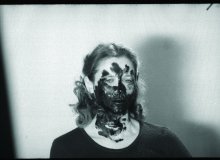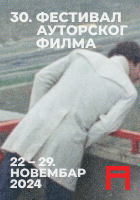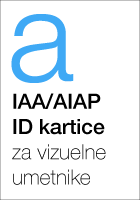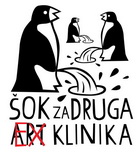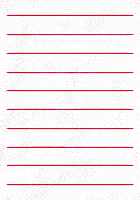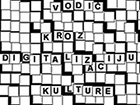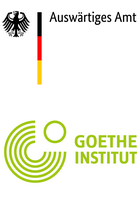Venice Forum: Running Time
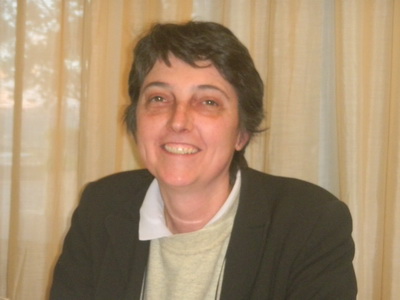
The sixth CEI Venice Forum for contemporary art curators, a Continental Breakfest Project, will be held on May 30 in Venice, in the scope of the 55th Venice Biennale, organised by the Trieste Contemporanea Committee, in cooperation with the Central European Initiative (CEI) and the UNESCO Regional Bureau for Science and Culture in Europe, Venice. SEEcult.org spoke to Giuliana Carbi Jesurun, president of the Trieste Contemporanea Committee.
- What is the main mission of Trieste Contemporanea now, given the context in which it was established almost 20 years ago with the aim to bring out Trieste's role as a hinge between Western Europe, Eastern Europe and the Mediterranean areas? Have you achieved your goals and what were the main obstacles in your way?
When the project of Trieste Contemporanea started, it was a very ‘anomalous’ project, and unexpected for the city. As you know, Trieste is a city with a complex story. Not to mention that dealing with these issues from the point of view of contemporary visual art, let’s say, was not the easiest path. But we hoped for the best! And in hindsight I can say that we were right: we led the way for a number of new European projects of cultural co-operation which are now active here. Most importantly however is that our project, and the Continental Breakfast network that come out of it, has gained a number of friends from all over Europe. The best practice is kindling enthusiasm in each other when dreaming up something… you can only succeed in building that dream with friends.
- When you look at contemporary art practices in Central-Eastern Europe over the past 20 years, what are their prominent characteristics and what has affected them?
I can see that we are speaking the same language. The ‘Soviet’ style criticism, which was unable to go beyond a sort of self-protection and was invariably used to validate artistic quality by a reasoning of belonging, has faded.
- How is the financial crisis affecting contemporary art scenes in Europe and how would you compare the situation in Western Europe to other countries?
Unfortunately, within the crazy global economy we have built, wherever a crisis occurs it has no substantial variance... I can quote here a recent report from EUROSTAT, the statistical office of the European Union, that compares the 2011 expenditure for Culture and for Education in the 27 EU member states. According to analysis, Greece and Italy were contending for last place. Perhaps it is time we made our political representatives place the two fields in relation to one another and consider whether there is a cause-effect connection with regard to the fact that, at the time, these two states were also the weakest EU countries in terms of 'bond spread'.
- How does the economic crisis affect funding possibilities for the Trieste Contemporanea and your projects?
That is a very dramatic issue. We are mainly funded by our local government which has already cut 30% of our budget in 2010. Now, halfway into 2013, we are still awaiting their decision with regard to our budget for 2013! Rumor has it the new cut will be 50%.
- Contemporary art practices often means precarious working conditions. Artists in Ireland, for example, even launched the campaign Ask! Has the artist been paid? Do you think that a difference in the positioning of the different actors in the exhibition making process, including curators and artists, could bring about change in terms of their activities in the future?
A very joyous fact, that always surprises me going around Eastern European countries – as opposed to the Italian situation – is that curators and directors working in art institutions are very young and that ‘institutional’ solo shows are also dedicated to young artists. The enormous general problem of unemployment of our European young professionals is an emergency that, perhaps, in the field of art has not yet revealed its extensive scale because in Europe we are labouring under the wrong assumption that people concerned with the arts are not workers in a proper sense. We therefore must, in the first instance, ‘educate’ citizens to change this way of thinking. In my opinion, we must do this through cultural projects that can connect deeply with people, to touch the heart of people so to speak – instead of flailing and wriggling around an unspecific, all-embracing concept of Public Art. And, in openly discussing how contemporary art today can address the public with any social significance - through intercommunication and mutual understanding - we must be able to directly address our government(s) policy-making in the cultural field, which is a pressing issue for all of us.
- How much has the perception of the “other” in and beyond the new Europe - which was a crucial issue behind the launching of the Continental Breakfast network and the Venice Forum - changed in last ten years, bearing in mind that now, even the idea of Europe is being questioned and there seems to be a certain revival of nationalist ways of thinking? What are the elements of a common European identity now?
If I were able to answer this difficult question, I would be a great philosopher and statesman. Are you able to answer it? Even if I were to agree with you that the crisis appears to be changing the situation for the worse and that nationalist extremism seems to be increasing in Europe, I would not change the core idea we had when we started the project: it is only respect of our differences that can make us identify ourselves as Europeans… Why, for example, if you travel across the Balkans you can see new minarets and crosses erected in direct opposition to one another and competing in height – in a sort of 'medieval style’ intimidation tactic – instead of offering the plain self-confidence both their presence? We are long way from understanding the simple secret of how to live in 'harmonious cohabitation', and not only in Europe but in the rest of the world. But I am counting on reaching this goal through the formidable engine that promotion of cultures can in fact be (especially when dealing with self-disclosure and histories on how cultural differences were and are going to be processed and ‘accepted’ by people).
- This year’s Venice Forum is dedicated to the topic Running Time. Could you elaborate on that?
Our Evo Veloce runs and constantly changes: its reference points; its interpreting tools; its predisposition for cultural archiving in line with meanings from contextual positions which can be multiple, hybrid or even unsystematic. Similarly, in terms of current cultural products, the concepts behind the art exhibitions proposed by the curators are very diverse and based on a great deal of personal investigation. The 2013 Venice Forum – which commemorates 10 years of activity – wants to stimulate reflection on the wealth of observational working tools available by discussing and comparing examples of, and the main criteria for, the subjective decisions taken by curators with regard to the greater or lesser importance of a contemporary work and/or artistic action, according to each of their opinions. Specifically, the aim of this year's meeting is to discuss a number of curatorial choices – with the protagonists directly, ranging in educational background, age and country of origin – from a short time period immediately contiguous to the present, namely the last 10 years.
- Based on your experience, as well as on debates and conclusions of previous editions of the Venice Forum, what would be your advice to young curators who are just starting their professional development?
My word of advice to them would be the same as that of a piece of ancestral wisdom I once heard: 'To be loyal and severe with their thought.' Secondly, after having learned to be a Professional – and that is not an easy feat, due to the fact that there are less and less opportunity of finding a good mentor – and beside, being constantly informed about latest proposals from the international artistic community and about latest historical studies, a young curator has mainly to follow his/her own intuition. Still, they also need to share their project with friends who are able to find its virtues and vices. Discussing means strengthening. All the great art movements of the past were born from dialogue between artists and critics… Even though the tools of communication are now totally different, this approach has worked to date.
- How do you see the future of curatorial practices – the worst and best case scenarios?
That is precisely the question that we are going to be posing at the Venice Forum. The fact is that, for many reasons, we have to change. But, we must also be aware of the new directions to follow. I’m curious about the perspectives the Venice Forum's participants will propose…

